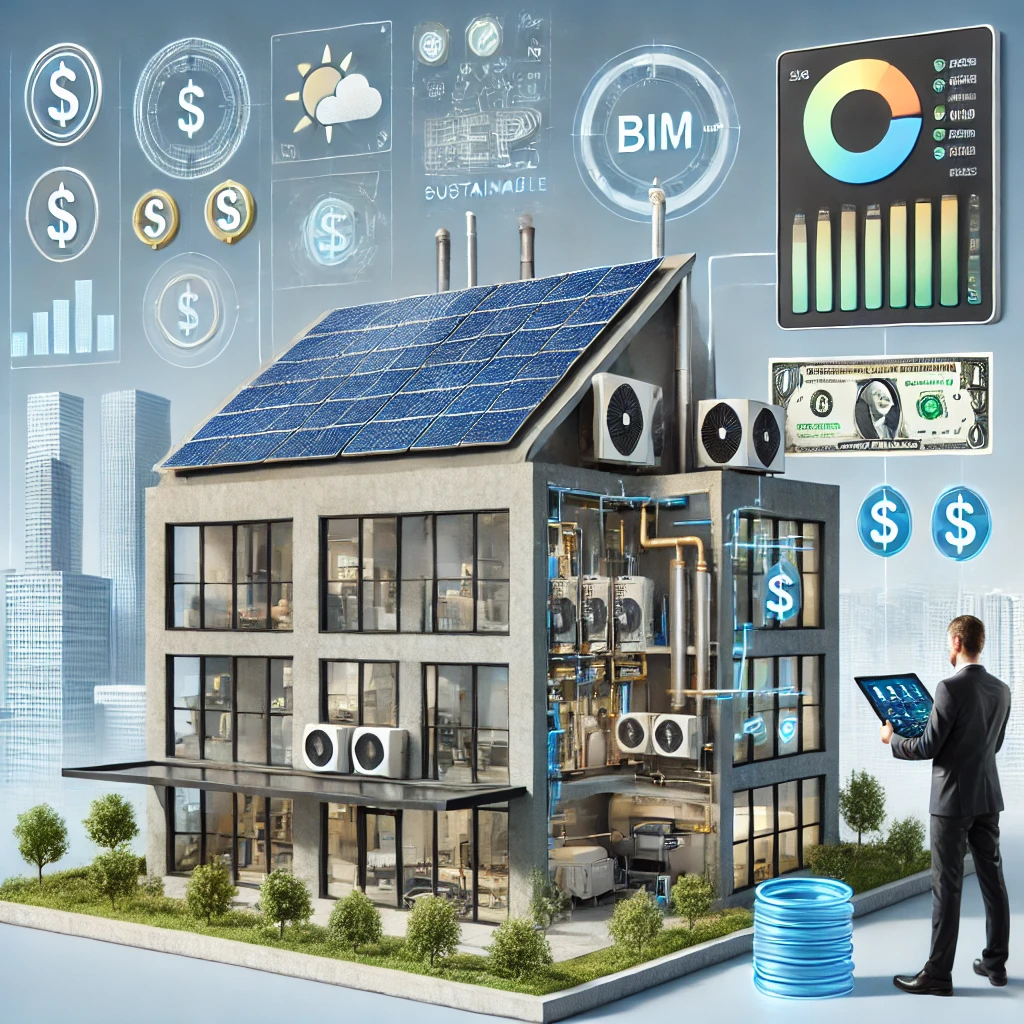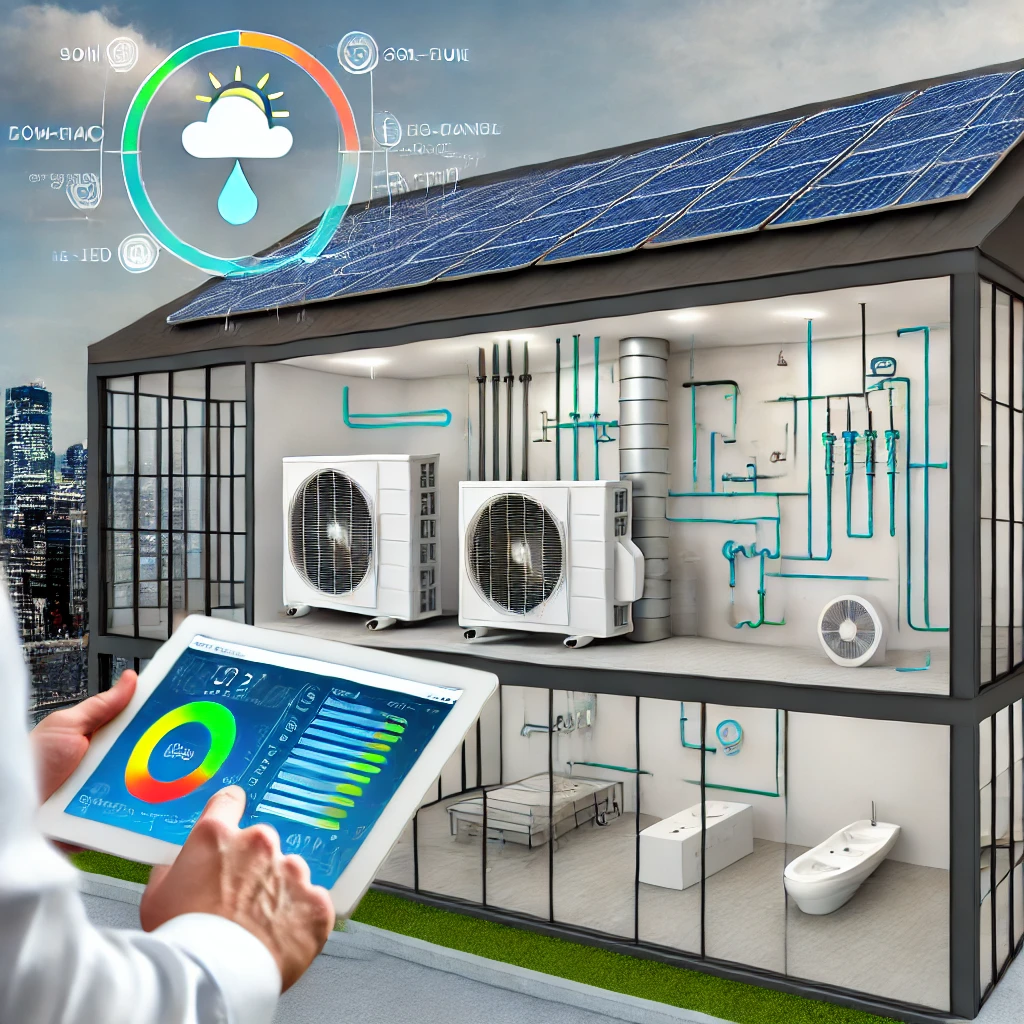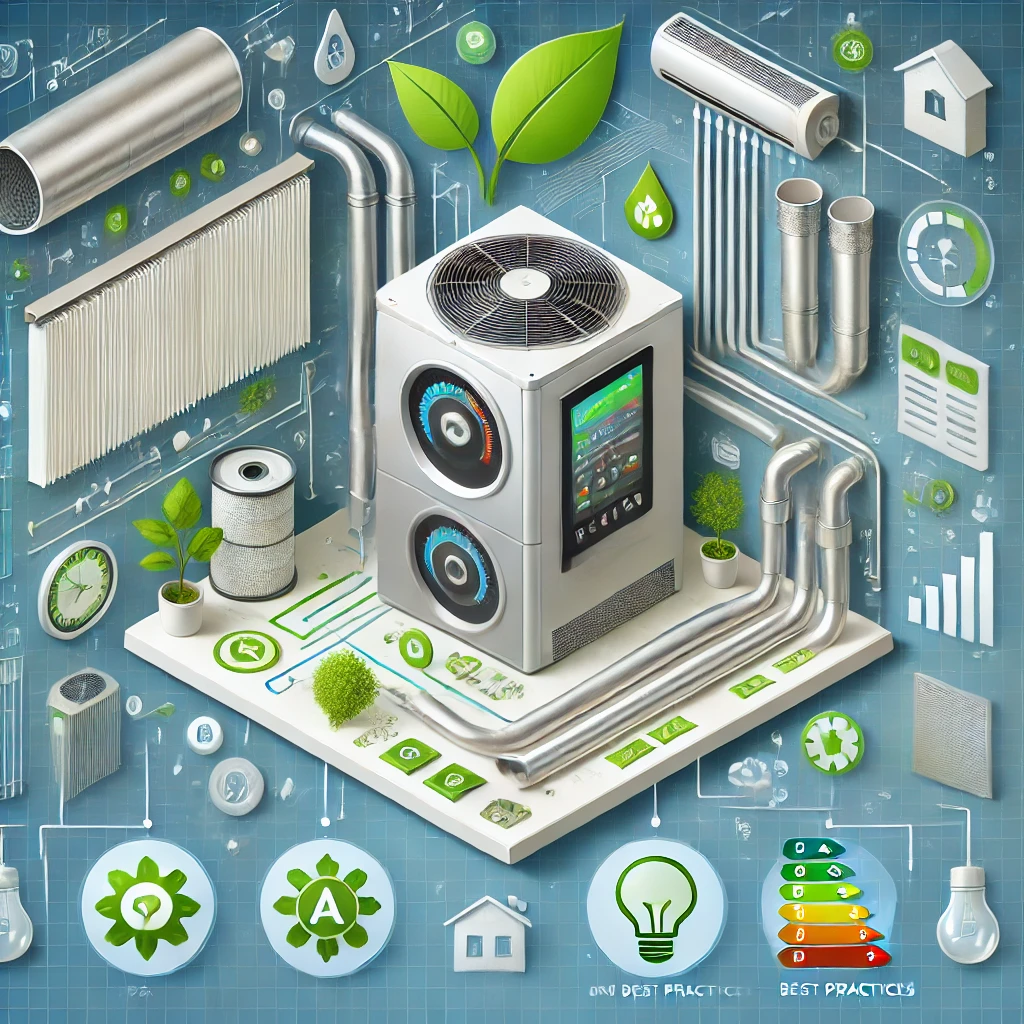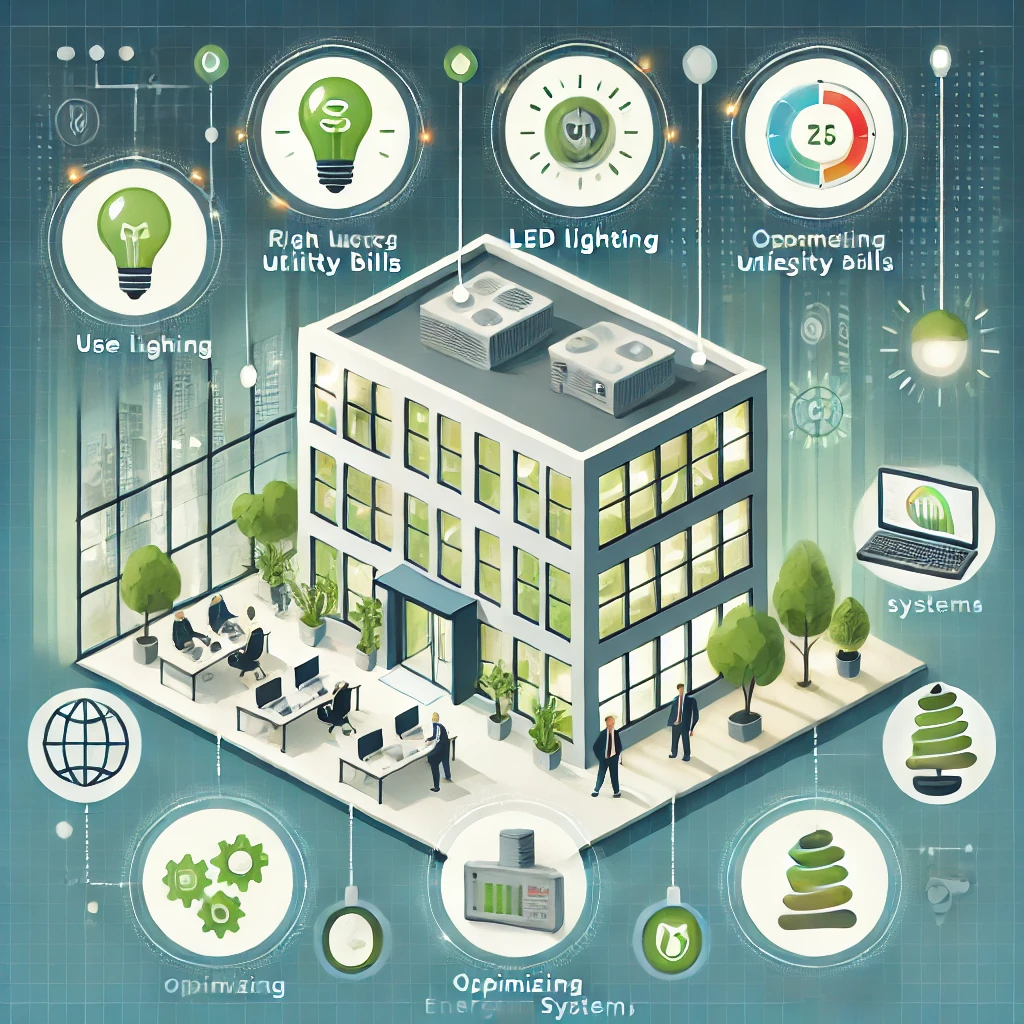Cost-Effective Strategies for Sustainable MEP Engineering

As the world pushes towards more environmentally friendly practices, the construction industry is increasingly focusing on sustainability. In Mechanical, Electrical, and Plumbing (MEP) engineering, this shift is crucial for developing energy-efficient, low-impact building systems. However, balancing sustainability with cost-effectiveness can be a challenge. This article explores practical strategies for integrating sustainability into MEP design while keeping costs under control.
Early-Stage Sustainable Design
The foundation of a cost-effective, sustainable MEP system starts at the design stage. Implementing sustainable principles from the project's inception ensures that energy-efficient systems and technologies are woven into the building's architecture and infrastructure, avoiding expensive retrofits down the line.
- Integrated Design Approach: Collaboration between MEP engineers, architects, and structural engineers from the outset allows for seamless integration of sustainable solutions. For instance, passive design strategies—such as optimizing building orientation, natural ventilation, and daylighting—can reduce the need for oversized HVAC systems, saving costs on installation and operation.
- Energy Modeling: Using energy modeling software early in the design process helps predict a building’s energy consumption. By analyzing various scenarios, engineers can make informed decisions about the most energy-efficient and cost-effective solutions, such as downsizing mechanical systems based on lower energy demand.
Energy-Efficient HVAC Systems
Heating, ventilation, and air conditioning (HVAC) systems are often the largest energy consumers in a building. Focusing on energy efficiency in HVAC design is one of the most impactful ways to improve sustainability and reduce operational costs.
- Variable Refrigerant Flow (VRF) Systems: VRF systems allow precise temperature control and can operate at different capacities depending on demand. This makes them more energy-efficient compared to traditional systems that run at full capacity even when it's not needed, leading to long-term cost savings.
- Heat Recovery Systems: Installing heat recovery systems captures waste heat from exhaust air or water and repurposes it for heating or cooling. While there’s an upfront cost for these systems, the energy savings over time make them highly cost-effective.
- Demand-Controlled Ventilation (DCV): DCV systems use sensors to adjust ventilation based on occupancy. By providing ventilation only when needed, these systems significantly reduce energy consumption in underused spaces, lowering both operational costs and environmental impact.
Efficient Lighting and Electrical Systems
Lighting accounts for a significant portion of a building’s energy consumption. Sustainable MEP engineering strategies can dramatically reduce lighting energy use through smarter design and technology integration.
- LED Lighting: LEDs are much more energy-efficient than traditional incandescent or fluorescent lighting, consuming up to 75% less energy and lasting significantly longer. While the initial investment in LED lighting may be higher, the reduced energy use and longer lifespan make it a cost-effective choice in the long term.
- Daylighting Integration: Natural lighting reduces the need for artificial lighting. MEP engineers can design systems that automatically adjust interior lighting based on natural light levels, reducing energy use. Installing automated lighting controls such as dimmers, timers, and occupancy sensors further optimizes energy savings.
- Smart Electrical Systems: Smart meters and energy management systems allow building managers to monitor and optimize energy consumption. These systems can adjust electrical loads during peak and off-peak hours, reducing electricity costs. They also provide data that helps identify inefficiencies in electrical systems, leading to long-term energy savings.

Water Conservation Strategies
Water conservation is another crucial aspect of sustainable MEP engineering. Reducing water use not only saves resources but also lowers the building’s operational costs, especially in regions where water prices are rising.
- Low-Flow Fixtures: Installing low-flow faucets, toilets, and showers is an effective way to reduce water consumption without compromising functionality. These fixtures use significantly less water per use, lowering water bills over time.
- Rainwater Harvesting: Collecting and storing rainwater for non-potable uses, such as irrigation and toilet flushing, can significantly reduce water demand. This system is relatively inexpensive to install and can provide substantial savings in areas with high water costs.
- Greywater Recycling: Greywater systems recycle wastewater from sinks, showers, and washing machines for non-potable uses like landscaping and toilet flushing. While more complex and costly to implement, greywater recycling systems provide significant long-term savings in both water use and sewage costs.
Renewable Energy Integration
BIM extends beyond the design and construction phases of a building project. It also plays a key role in the ongoing management and maintenance of MEP systems throughout the building’s lifecycle.
- Digital Twin for Maintenance: A BIM model serves as a “digital twin” of the building, providing facility managers with detailed information about the MEP systems after construction is completed. This digital twin helps streamline maintenance by providing real-time data on system performance, facilitating predictive maintenance, and allowing for more efficient troubleshooting when issues arise.
- Improved Asset Management: BIM helps facility managers track the condition and performance of MEP assets over time. By integrating sensors and IoT technology into the building, BIM can be used to monitor equipment usage and lifespan, schedule preventive maintenance, and optimize the operation of systems to extend their life and reduce energy consumption.
Prefabrication and Modular Construction
Renewable energy sources are a key component of sustainable MEP engineering. While the initial investment may be higher, renewable energy systems can lead to significant savings over time by reducing reliance on grid-supplied electricity.
- Solar Power: Solar panels are one of the most common renewable energy solutions in sustainable building design. By generating electricity on-site, buildings can offset a significant portion of their energy demand, reducing utility bills. Solar panels can be paired with energy storage systems to store excess energy for use during peak demand periods.
- Geothermal Heating and Cooling: Geothermal systems use the stable temperature of the earth to provide heating and cooling. These systems are highly efficient and can reduce energy costs by up to 50% compared to conventional HVAC systems. While installation costs can be high, the long-term savings make geothermal systems a cost-effective investment.
Modular and Prefabricated MEP Systems
Modular and prefabricated MEP systems are gaining popularity for their ability to reduce waste, cut costs, and shorten construction timelines.
- Off-Site Fabrication: Prefabricating MEP components in a controlled factory environment leads to higher precision and reduced material waste. This also allows for faster on-site installation, reducing labor costs and the overall project timeline.
- Modular MEP Design: Modular systems are designed to be scalable and adaptable, making them cost-effective for buildings that may need to expand or change in the future. By designing modular MEP systems, engineers can ensure that the building’s infrastructure can be easily modified without extensive renovations.
Lifecycle Cost Analysis
While upfront costs are often a major concern, evaluating the total lifecycle cost of MEP systems helps identify the most cost-effective solutions over the long term. Lifecycle cost analysis considers not only initial costs but also operational, maintenance, and replacement expenses over the life of the system.
- Predictive Maintenance: Using Building Information Modeling (BIM) and Internet of Things (IoT) technology, MEP systems can be monitored in real-time for performance issues. Predictive maintenance allows for early detection of system failures, reducing downtime and repair costs while extending the life of the equipment.
- Energy Performance Contracts (EPCs): EPCs allow building owners to invest in energy-efficient MEP systems with little or no upfront cost. The savings from reduced energy consumption are used to pay for the system over time, making this a cost-effective way to implement sustainability.
Conclusion
Sustainable MEP engineering does not have to be expensive. By incorporating energy-efficient systems, water-saving technologies, and renewable energy solutions, MEP engineers can design cost-effective systems that benefit both the environment and the bottom line. Early-stage planning, smart technology, and lifecycle cost analysis are essential to achieving the perfect balance between sustainability and cost-effectiveness, ensuring buildings operate efficiently for years to come.
Category:



